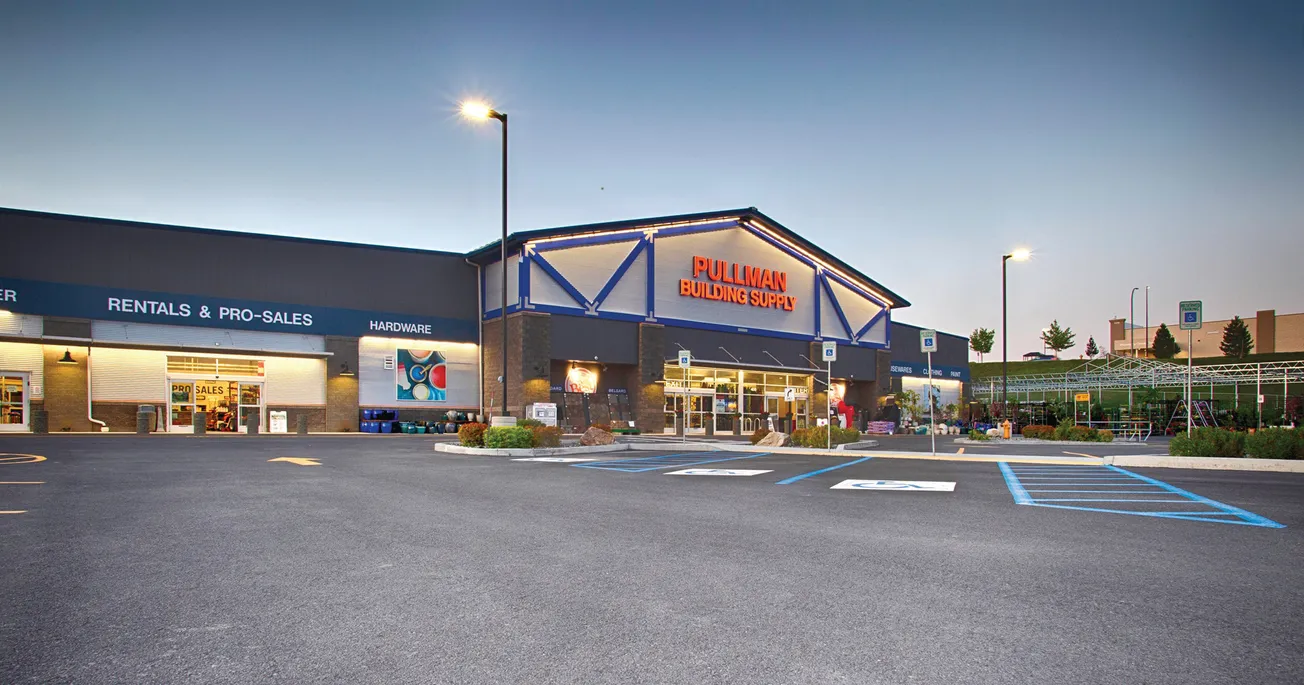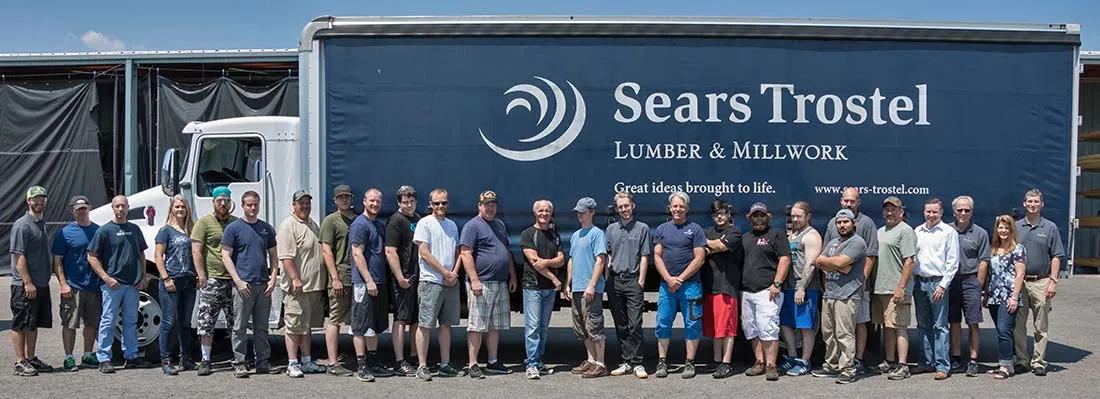Table of Contents
Orofino” is Spanish for “fine gold.” And that’s how this small town in rural Idaho won its name. When the miners’ gold ran out, in came the loggers. Today it’s turning into a bit of a retirement community, fueled by outdoor activities in the surrounding wilderness, ideal for hunting and fishing—plus a “semi-favorable tax environment and reasonable cost of living,” reports Will Crockett, who benefits from both.
And a whole lot more. “There’s a shortage of housing out here in the West, so there’s a healthy amount of new-home construction,” says the fourth-generation owner of Orofino Builders Supply, founded by his great-grandfather in 1924.
Will—age 32 at the time—bought the business from his father in 2010. He’d come back to it in 2005, following a five-year stint after college with BMC West, “where I learned a whole lot; they were very successful. But it was kind of time for me to come home, as I knew I would, some day,” drawn by family obligations and underscored by pride in continuing the legacy that’s now spanned 90 years.
He’d watched his father purchase Grangeville Builders Supply, a similar outfit nearby, in 1990. In 2007 Will designed from scratch the company’s third operation, Clearwater Builders & Design Center—each store 30 to 40 miles apart and serving its own community. No cannibalizing? “In North Central Idaho,” explains Will, “the roads are narrow and winding,” so you don’t run to the next dot on the map for a loaf of bread—or lumber. “All three stores carry similar inventory—very, very well-stocked. (We buy everything in truckloads.)”
And they all practice a strategy Will learned back in his days at BMC. “That company pioneered installed sales for virtually everything—framing, roofing, you name it.” And that’s Will’s winning hand, too. “We sell everything from cabinets to floor coverings and decks. Our contractors”—business is 60% pro, 40% walk-in—“don’t want to install, for instance, insulation. So, if we sell it, we install it. We don’t just offer product, we provide service. (We’re ready to expand our installed sales to gutter equipment next,” he notes.
Besides, as he explains, even if his pro customers preferred to manage the installations, who’s to do the work? “In today’s good times, framers are critically short; plumbers, electricians, too. Especially here in Idaho, where the business is seasonal and 75% of the work is done in the four, five months of summer, to keep a continuous construction crew would be challenging. So we, too, have to be creative—be willing to tweak schedules. Part-time help, historically, has not been advantageous, but these days, many people are choosing to work part-time, so you have to shift your mindset.”
Will could use more workers, but he chooses to hold the line: “Fifty is the magic number, when it comes to (mandated) health insurance. (We do provide some.) When I hire,” he explains, “I want someone eager, someone who wants to advance. But today, there’s so much competition for skilled labor. They’re all heading to the next modern-day Gold Rush: Alaska, South Dakota.
“So, you’ve got to make the sale—explain how, if you worked here, you could be done at 5, 6 o’clock, for dinner with the family. You need to find the right individual who values those traditions. We’re proud of what we have to offer and we pay pretty well. I’m proud of that, too.
“It’s not easy to provide a good wage when margins are low, and getting lower, on lumber. So we have to diversify ourselves: add products that increase margins. That’s a big reason we need skilled salespeople, who do more than stop at 2 x 4s—suggest a cabinet package, a siding package.”
That kind of mindset isn’t a given. “In staff training, there’s a learning curve, even if they come to us qualified. It takes six months to two years to get an understanding of our products, our computer system, our customers, our culture, and our community. Six months is just a crash course.
“My personal job is training, but not in formal courses. We harness the resources of our buying group and our suppliers (who have a vested interest in helping sell their product). I work with our young employees myself; I’m always around, never on vacation. I’m plugged in 24/7, and my phone never stops ringing.
“My style is, I don’t micro-manage. I have strong managers who treat their stores as if they’re their own. My weakness,” he confesses, “is managing. I’d rather pull an order, jump on the forklift or mix the paint: To me, that’s more satisfying than endless meetings. But other owners have cornered me with ‘Why on earth? You have bigger fish to fry.’”
Customers have no complaints. “They understand our focus on community orientation—that we’re not just a business—we live here, shop here, recreate here. We are a small-town retailer, here for our community. We offer competitive prices (and we are aware of what our competitors are doing.) We deliver to your doorstep. We are responsible in adding products people ask for. We bend over backwards.”
Still, there’s competition out there, including strong indies in Will’s market. “It keeps me up at night. Also, boxes—one 40 miles away, just close enough to keep us on our toes. Plus,” he shudders—as you all do, too—“Amazon.”
Still again, “Our objective is to be the Number One player in our market.” To retain the loyalty of his pros, Will offers Lunch & Learn sessions, breakfast meetings, and the occasional mill tour opportunity, “which they love! They get to see a product made. They love that!” For the retail trade, he offers Saturday classes in various crafts. (“They want entertainment,” he’s learned). A Ladies Night in all three stores has proved “wildly successful! The headcount was off the charts.”
A Design Center is another strong draw (and offers better margins than the 2x4s). “If you’re selling only commodities, it’s a tough gig. There are only 20, 30 housing starts (per year) here, and lumber is only 20% of the total product—so it’s best to diversify: floor coverings, cabinets, appliances, lights, heating. And it sets us apart from the competition. When we added the Center, it put us on the cutting edge.”
When Will built the new store in Orofino, the former building became its Design Center. “We quadrupled the square feet of the store and doubled the square feet of the Design Center,” he reports.
Homeowners love it? Sure they do. But its major users (and fans) are Orofino’s pros. “We provide materials for the whole package. We manage that for them, which frees them to build more houses. And here, there’s a lot of demand for new construction, so builders can do more projects and turn the rest over to suppliers like us. We subcontract it or do it in-house—flooring, cabinets, millwork, siding. And especially pre-finishing. Contractors are starting to realize that pre-finishing is complicated.
“In terms of callbacks”—the eternal nightmare of every builder—“we reduce the number for them. We say, ‘We’ll take care of all that for you’—and for a charge, of course,” Will makes clear.
It’s also clear Will love-love-loves the business. He’s hoping his kids—a son, 12, and daughter, 8—may, too. “They’re the pride and joy of my life,” he exclaims. “Already my son assembles wheelbarrows, stocks the shelves and sweeps the floor. But they can choose their own path. My parents allowed me to do that, with no guilt trip.
“People think that owning your own business is an easy way to make money, but once you sit in the owner’s chair, it’s what you do. The business depends on me being here, never stay away. But the pride is unbelievable! I want to continue to offer opportunities to my kids and employees. It’s a great living!” he jubilates.









